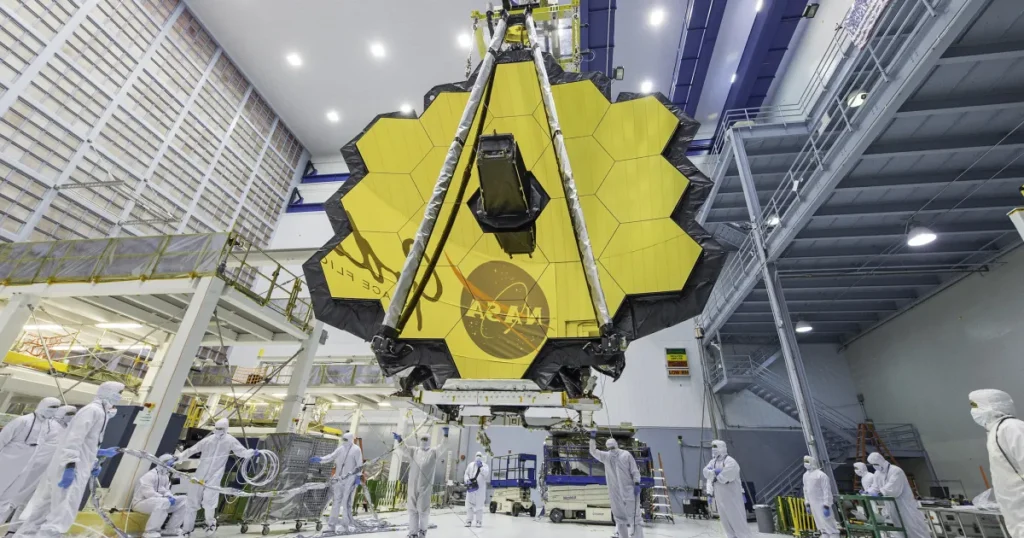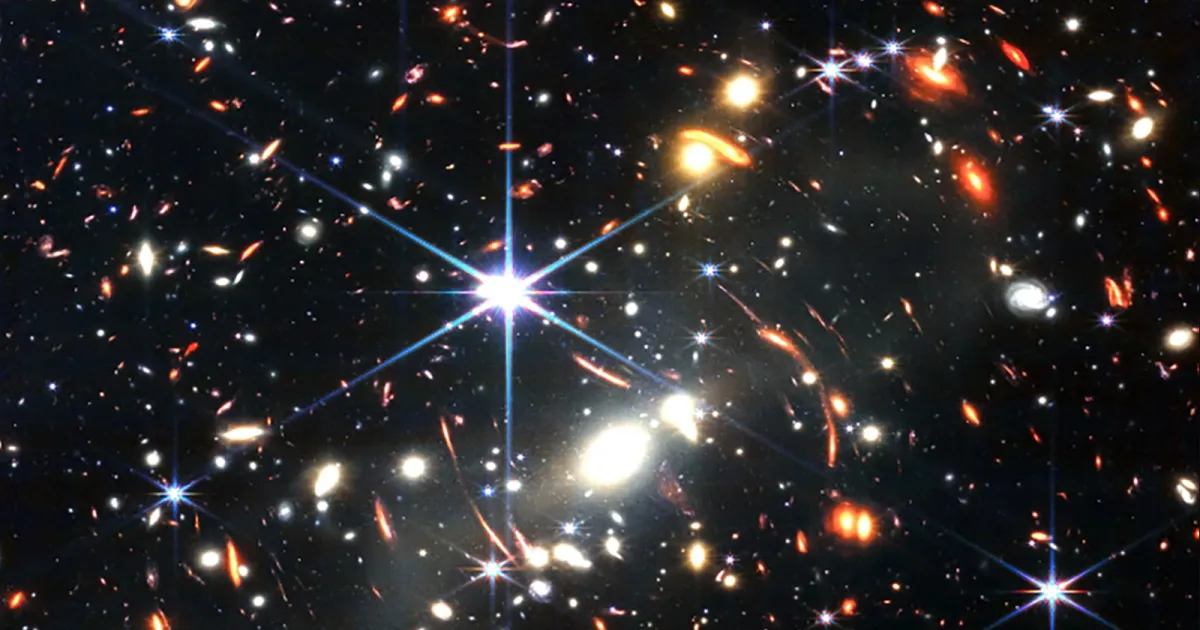Since its launch in December 2021, the James Webb Space Telescope (JWST) has revolutionized our understanding of the cosmos, making it the most powerful space observatory ever built. It has opened new windows into the universe, capturing breathtaking images of distant galaxies, star-forming regions, and exoplanets in unprecedented detail. With its advanced capabilities, JWST is poised to answer some of the most fundamental questions in astronomy and astrophysics. In this blog, we will explore the mission, technology, and groundbreaking discoveries of the James Webb Space Telescope, highlighting how it’s changing the way we perceive the universe.
1. The Vision Behind the James Webb Space Telescope
The James Webb Space Telescope was conceived to be the successor to the Hubble Space Telescope, which has provided invaluable insights into the universe for more than three decades. While Hubble focused primarily on visible and ultraviolet light, JWST is designed to observe the universe in the infrared part of the electromagnetic spectrum. This allows it to see through cosmic dust, study distant objects in greater detail, and explore phenomena that were previously hidden from view.
The idea for JWST emerged in the early 1990s when NASA, in collaboration with the European Space Agency (ESA) and Canadian Space Agency (CSA), began conceptualizing an observatory capable of looking further back in time, toward the very birth of the universe itself. JWST was designed to observe the earliest galaxies, stars, and planetary systems, as well as study the formation of stars and planetary atmospheres in our own universe.
2. The Advanced Technology Behind JWST

JWST is a technological marvel, featuring groundbreaking innovations that make it stand apart from previous space telescopes. Its capabilities are largely driven by the following key technologies:
– Infrared Observations
The JWST is primarily an infrared telescope, meaning it detects light in the infrared part of the electromagnetic spectrum. Infrared light has longer wavelengths than visible light, which allows it to pass through cosmic dust and gas, revealing objects that are hidden from optical telescopes. This feature is critical for observing distant galaxies, star-forming regions, and exoplanets.
To operate in the infrared, JWST is equipped with a cryogenic system that cools its instruments to extremely low temperatures. The telescope’s primary mirror and scientific instruments must be kept at temperatures below -370°F (-223°C) to ensure that their heat signatures do not interfere with the faint infrared signals they detect.
– The Sunshield
One of the most remarkable features of JWST is its sunshield, a five-layer structure about the size of a tennis court. The sunshield blocks heat and light from the Sun, Earth, and Moon, allowing the telescope to stay cool and protect its delicate instruments. By keeping the telescope’s instruments at cryogenic temperatures, the sunshield ensures that JWST can detect faint infrared radiation without interference from heat.
– The Large, Segmented Mirror
JWST’s primary mirror is 21.3 feet (6.5 meters) in diameter, making it more than two and a half times larger than Hubble’s mirror. The mirror is made up of 18 hexagonal segments that work together to collect light from distant sources. The segments are made of beryllium and coated with a thin layer of gold to enhance their ability to reflect infrared light. This large, segmented mirror allows JWST to capture much more light, enabling it to observe distant objects with unparalleled resolution and sensitivity.
– The Instruments
JWST carries four main instruments designed to study the universe in a variety of ways:
- Near Infrared Camera (NIRCam): NIRCam detects the faint infrared light from distant galaxies, stars, and planetary systems. It is also crucial for detecting the earliest galaxies formed after the Big Bang.
- Near Infrared Spectrograph (NIRSpec): NIRSpec can analyze the composition of light from distant objects, providing information about their chemical makeup, temperature, and motion.
- Mid-Infrared Instrument (MIRI): MIRI observes the universe in the mid-infrared range, allowing scientists to study cooler objects like exoplanets and star-forming regions. It also helps in detecting the most distant galaxies.
- Fine Guidance Sensor/Near InfraRed Imager and Slitless Spectrograph (FGS/NIRISS): This instrument is used to help JWST stay pointed accurately and conduct detailed observations of exoplanets, including studying their atmospheres.
3. Key Discoveries of the James Webb Space Telescope

Since JWST began transmitting data, it has already made a number of groundbreaking discoveries, reshaping our understanding of the universe. These discoveries have far-reaching implications for cosmology, planetary science, and the search for life beyond Earth.
– Deep Field Observations
One of JWST’s most remarkable feats has been its ability to capture the deepest and most detailed images of distant galaxies. In July 2022, NASA released the telescope’s first deep-field image, showing galaxies dating back to less than 300 million years after the Big Bang. The image, known as the “Webb Deep Field,” reveals thousands of galaxies, some of which are the most distant ever seen. This groundbreaking image provides unprecedented insights into the early universe, allowing scientists to study how galaxies formed and evolved.
– Exploring Exoplanet Atmospheres
JWST is also paving the way for the study of exoplanets—planets that orbit stars outside our solar system. The telescope’s ability to observe in the infrared spectrum allows scientists to study the atmospheres of exoplanets in more detail than ever before. JWST has already detected the chemical composition of exoplanet atmospheres, identifying the presence of molecules like water vapor, carbon dioxide, and methane. These findings are crucial for understanding the habitability of exoplanets and for identifying potential signs of life.
In one high-profile discovery, JWST observed the atmosphere of an exoplanet known as WASP-96 b. The data revealed clear evidence of water vapor in the planet’s atmosphere, a breakthrough in the search for habitable worlds.
– Star and Galaxy Formation
JWST is allowing scientists to peer into star-forming regions with unparalleled clarity. By observing the earliest galaxies, JWST is helping scientists understand how galaxies and stars form and evolve. One of the key areas of interest is the formation of the first stars, or Population III stars, which are believed to have been composed entirely of hydrogen and helium and formed only a few hundred million years after the Big Bang.
JWST’s observations of star-forming regions in nearby galaxies are also revealing the process of stellar birth in unprecedented detail. These observations are shedding light on how new stars are created and how they influence their surrounding environments.
– Uncovering the History of the Universe
Perhaps one of the most exciting prospects of JWST is its ability to study the universe’s earliest moments. By observing light from galaxies formed only a few hundred million years after the Big Bang, JWST is giving us a glimpse into the first epochs of the universe. These observations will help scientists better understand the formation of galaxies, the development of cosmic structures, and the role of dark matter and dark energy in shaping the universe.
4. The Future of JWST and Its Impact on Science
The James Webb Space Telescope is expected to revolutionize many areas of science over the next decade. The data it provides will deepen our understanding of the origins of the universe, the formation of stars and planets, and the potential for life beyond Earth. However, the journey is just beginning, and JWST’s long-term legacy will be shaped by ongoing observations and discoveries.
– Continued Exploration of Exoplanets
JWST’s ability to analyze exoplanet atmospheres will continue to be one of its most significant contributions. Future missions will focus on investigating more distant exoplanets, particularly those in the habitable zone—the region around a star where conditions might allow liquid water to exist. This will aid in the search for potentially habitable worlds and help scientists determine the conditions that make a planet suitable for life.
– Further Insights into the Early Universe
JWST will continue to push the boundaries of our knowledge about the universe’s early days. By studying the most distant galaxies and cosmic structures, JWST will refine our understanding of how the universe evolved from the Big Bang to its present state.
– A New Era of Astronomy
The James Webb Space Telescope has already set a new standard for space-based astronomy. Its cutting-edge technology and unprecedented capabilities will continue to inspire generations of scientists, astronomers, and engineers. JWST will play a critical role in the search for life beyond Earth and will deepen our understanding of the fundamental processes that govern the universe.
Conclusion
The James Webb Space Telescope represents a giant leap forward in our ability to explore the universe. With its advanced technology, JWST is reshaping our understanding of the cosmos, revealing hidden details of distant galaxies, star-forming regions, and exoplanets. Its discoveries are not only expanding our knowledge of the universe but also bringing us closer to answering some of humanity’s most profound questions: How did the universe form? Are we alone in the cosmos? What lies beyond the stars?
As JWST continues to operate, its impact on science will be felt for decades to come, transforming our understanding of the universe and our place within it. The future of astronomy has never looked brighter.



